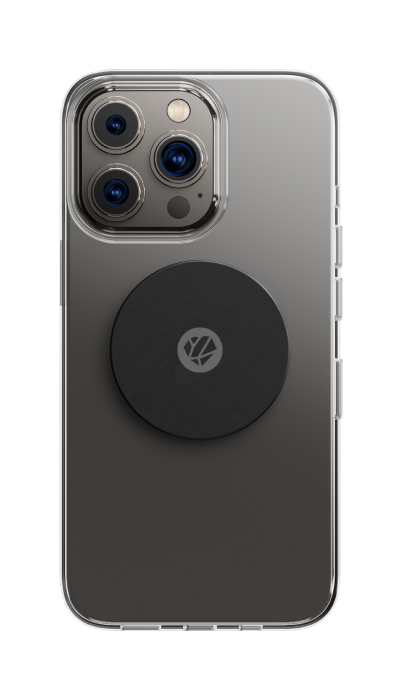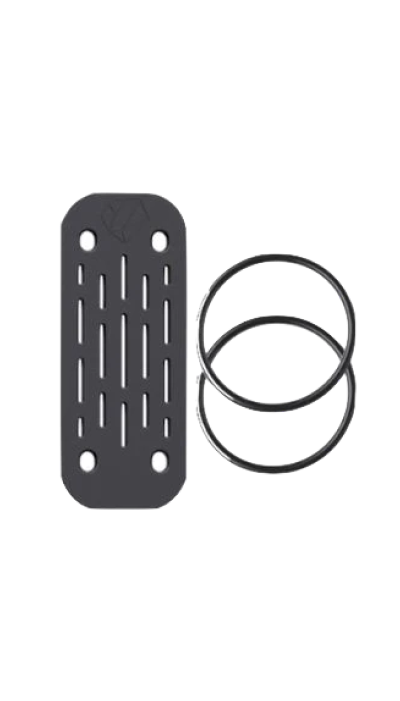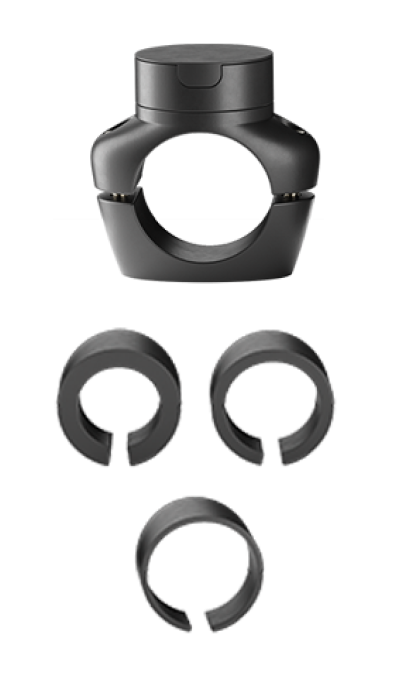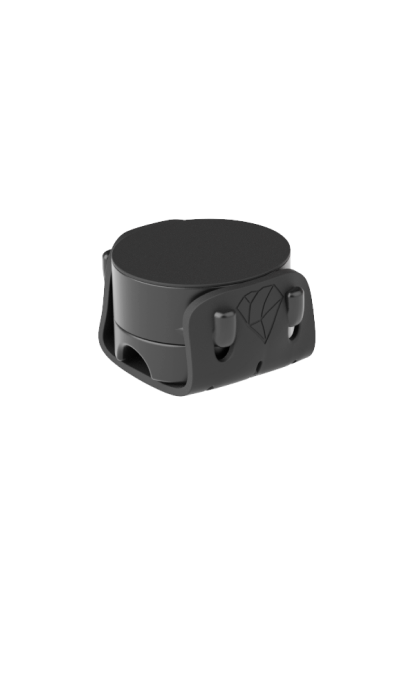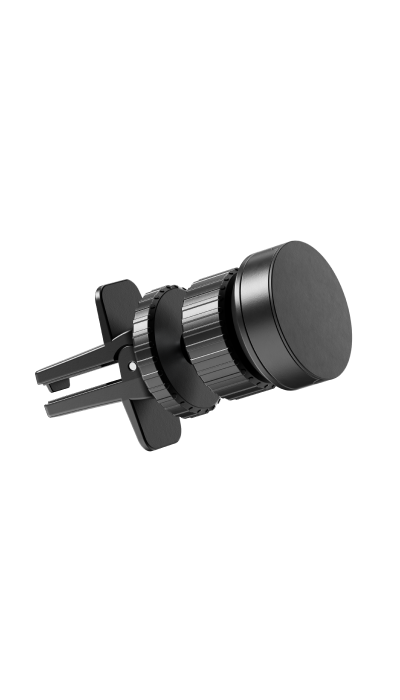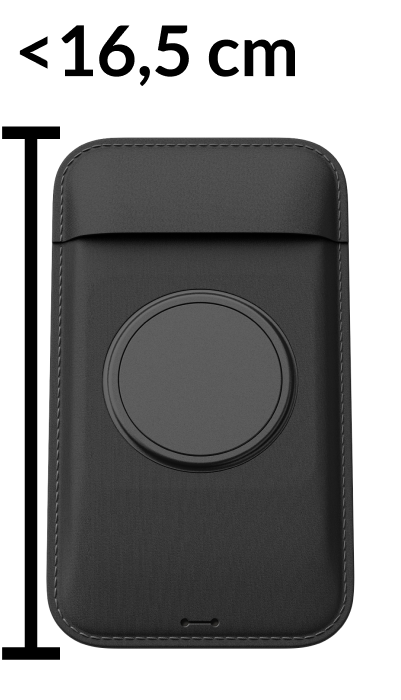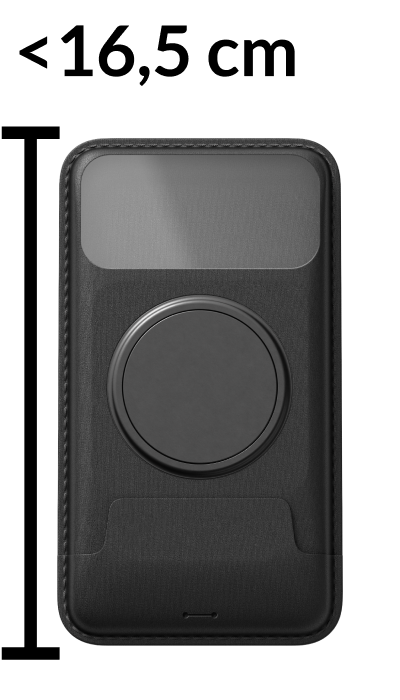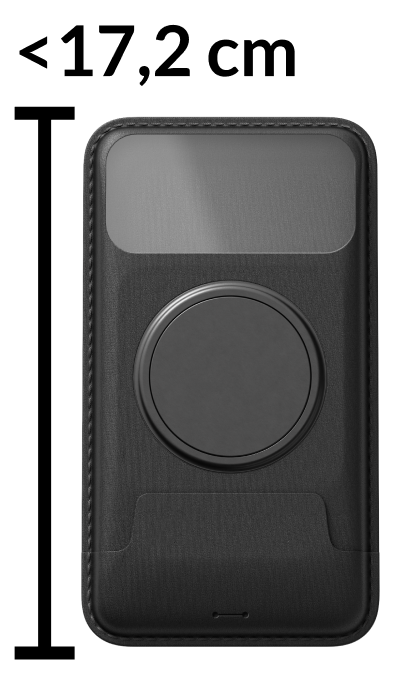They trust us:
Protects your phone
Absorbs vibrations
Protects your phone
Absorbs vibrations
When attaching your phone to a motorcycle or scooter, it may be exposed to high-frequency vibrations from the engine, which can potentially damage your phone's camera (especially the optical stabilizer).
Our sleeve absorbs up to 50% of engine and road vibrations.
For up to 90% vibration reduction, we recommend using the Shapeheart anti-vibration system. The anti-vibration feature is also recommended when using the steel plate in any situation.
STEERING COLUMN
Turnkey installation
STEERING COLUMN
Turnkey installation
1. Choose the correct adapter and nut for your steering column diameter:
- 11 to 13.9 mm: use the 11 mm adapter and 11 mm nut.
- 14 to 16.9 mm: use the 14 mm adapter and 11 mm nut.
- 17 to 24 mm: use the 17 mm adapter and 14 mm nut.
2. Remove the silicone cover from the mount, then use the hex key to tighten the mount sufficiently. Compress the cylindrical silicone part so that the mount cannot be removed by hand.
3. Replace the silicone cover. Insert your phone into the sleeve, snap it onto the mount (ensuring it's centered), and you're ready to go!
Q&A
Are magnets dangerous for my phone?
No, because there is no magnetic field inside the sleeve or through the plate. We explain everything here.
Moreover, brands like Apple now integrate magnets inside their phones.
I’ve heard that mounts can damage my phone's camera. Is that true?
This is true only for motorcycles, where engine vibrations from certain models can damage the optical stabilizer of some phones (mainly iPhones). However, our mounts with sleeves absorb these vibrations, so there's no risk.
We explain it all here.
Can my phone be stolen?
The question is legitimate, but this is not an issue we encounter. On the one hand, the mount is removable and very discreet, without any visible distinctive signs. The risk is no greater than when holding your phone in your hand on the street.
Snatch thefts mostly occur in public transport, like in the subway, where, once the doors are closed, it becomes difficult to act.
Again, the question is legitimate, but we haven't had any reports of such thefts.
If you are still concerned, you can install the Shapeheart phone leash.
Is the sleeve tactile?
Yes, of course. To ensure the best touch sensitivity, it's important to choose the right sleeve size. Refer to our size guide.
Does the sleeve really protect against the rain?
The Classic and Pro sleeves protect from rain, but they are not designed to be submerged. For that, choose the waterproof sleeve.
In normal conditions, you can ride in the rain without any problem with our three sleeves.
Can my phone overheat?
Obviously, the phone will heat up more inside the sleeve than without. This depends on the phone model, GPS usage, whether you're charging it at the same time, and the outside temperature.
It's rare, but it can happen. In that case, it’s best to choose the version with the steel plate.
Are there reflections in sunlight?
Yes, it can happen depending on the position of the sun, your phone, or your posture on the bike or motorcycle. You can use the steel plate to limit this effect, but keep in mind that even without a sleeve, visibility can be reduced in direct sunlight.
Don't forget to increase the brightness to the maximum.
Can I charge my phone?
Yes! The Classic and Pro sleeves have a slot for the charging cable.
What if I change my phone?
If the size is similar, you don't need to buy anything. Otherwise, you can just purchase a new sleeve without having to replace everything.
Is there a warranty?
Yes, up to 10 years by registering your product. All explained here.
Is it compatible with induction and/or Magsafe charging?
The steel plate is not directly compatible with wireless charging. By sticking the metal steel onto your phone case, you simply need to remove the case to charge your phone on a MagSafe charger.
MagSafe alone will not be enough to absorb shocks. It is essential to use the Shapeheart sleeve or plate to ensure proper support attachment.
Which version to choose?
It's all explained: here.









